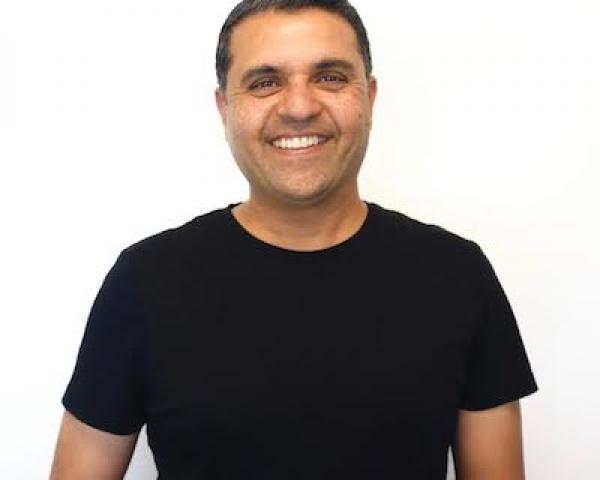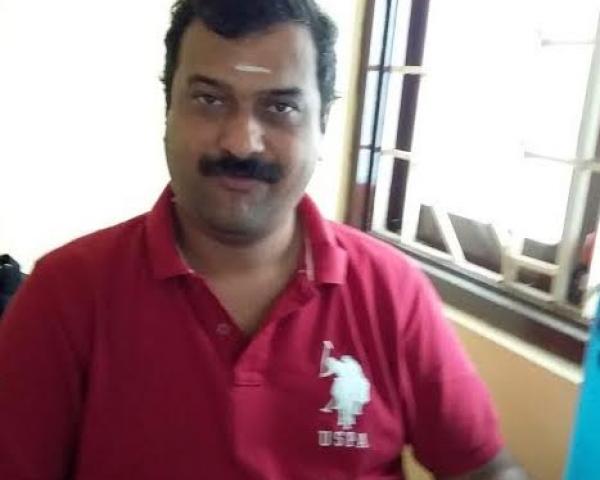When the Cosmetic Is Consequential
Should insurers approve every facelift, hair transplant, skin cream, spa appointment and teeth whitening session? No. But sometimes....

Should insurers approve every facelift, hair transplant, skin cream, spa appointment and teeth whitening session? No. But sometimes....

Get Involved
Our authors are what set Insurance Thought Leadership apart.
|
Partner with us
We’d love to talk to you about how we can improve your marketing ROI.
|
Here are five key challenges for insurers, with examples of how Amazon and Netflix used microservices to address similar issues.

Get Involved
Our authors are what set Insurance Thought Leadership apart.
|
Partner with us
We’d love to talk to you about how we can improve your marketing ROI.
|

Karen Furtado, a partner at SMA, is a recognized industry expert in the core systems space. Given her exceptional knowledge of policy administration, rating, billing and claims, insurers seek her unparalleled knowledge in mapping solutions to business requirements and IT needs.
A new platform for insurers saves time and resources and eliminates the friction that exists in interactions with customers and employees.

Get Involved
Our authors are what set Insurance Thought Leadership apart.
|
Partner with us
We’d love to talk to you about how we can improve your marketing ROI.
|

Simha Sadasiva is the co-founder and CEO at Ushur, the first micro-engagement service platform that leverages data and technology to digitally transform back-end processes and conversational interfaces for enterprises in the insurance sector.
As low-lying airports recognize the risks associated with climate change and rising sea levels, it is critical that they begin to build resilience.

Major storms, including accompanying winds and floods, threaten lives, destroy property and damage critical infrastructure. Power outages, broken communication lines and disruption to road, rail, sea and air transport are common in the aftermath of major storms. Among the damages from September’s Hurricane Florence, for example, was the closure of 200 roads in South Carolina, including a section of Interstate 95 – a major highway connecting the U.S.’s East Coast. South Carolina officials estimated that the storm caused more than $300 million in infrastructure damage.
On the other side of the globe, Typhoon Jebi caused widespread damage throughout Japan, and flooding closed an airport. As storms and rising sea levels increase flood risk, governments around the world are looking for ways to better protect people and communities. In addition to devastating societies, over the past few decades floods have led to $550 billion in global economic impact.
While we cannot fully protect ourselves from flood, working across industries is critical to build resilient communities and protect critical infrastructure. With many of the world’s busiest airports at a low elevation – and many more built near water on reclaimed land – these hubs are prime examples of infrastructure in need of protection. Not surprisingly, airport operators are rising to the challenge.
In Depth
September’s Typhoon Jebi shut down Kansai International Airport in Japan’s Osaka Bay. The airport, built on a manmade island and handling almost 30 million passengers a year, suffered considerable damage. A storm surge breached a seawall and flooded a runway and terminal building, leaving thousands of passengers and staff stranded. Kansai, a major international hub that serves several cities (including Kobe, Kyoto and Osaka), was closed for 10 days; and it took a further week to restore regular operations. Complicating the situation was the fact that critical facilities, such as the disaster response center and an electrical substation, were located in a terminal basement and flooded.
See also: Flood Risk: Question Is Where, Not When
Airports are critical elements of our infrastructure and, consequently, their resilience is essential. As the Airports Council International (ACI) noted in a September policy brief focused on airports’ resilience and their adaptation to climate change, “As an essential service provider to a wide range of stakeholders and users, the airport infrastructure and operations must have high levels of availability, reliability and resilience.”
Reclaimed Land, Rising Seas, Sinking Airports
Kansai is not the only major airport built on reclaimed land. Australia’s Brisbane Airport is on coastal reclaimed land, and San Francisco International Airport’s reclaimed site is gradually sinking. Other airports are at risk simply because their low elevation puts them at risk of a storm surge. A recent report from the U.S. National Climate Assessment identified 13 of the country’s 47 busiest airports as having at least one runway within 12 feet of current sea levels.
If sea levels continue to rise, these hubs will face increased exposure to storm surge risk. In general, the hydrological importance of airports: runways, halls and other facilities create large areas of impermeable surface with zero infiltration capacity. During extremely intensive rainfalls, which are increasing in strength due to climate change, airports can become extremely prone to pluvial, or flash, flooding. This can add to the pressure on airport management to revisit how effective their flood protection really is, especially as some structures are decades old.
Addressing the Risks and Protecting Critical Assets
As structures face risks posed by severe weather and other potential shocks, protecting infrastructure means developing resilience. Greg Lowe, global head, sustainability and resilience, at Aon, underscores the importance of properly safeguarding these critical assets – especially in the context of climate-related risk. Looking at infrastructure long-term, he states, is crucial, and “cities are asking whether their infrastructure is fit for purpose over decades.”
In the case of airports, the ACI’s September 2018 policy brief warned that more extreme weather “may lead to fundamental transformation of the socio-economic system.” For airports, “the risks of flooding, flight disruptions and cancellations become more likely.”
“Airports need to understand the risks and initiate adaptation measures for both existing and new infrastructure, as well as managing critical operations to become more resilient to the changing climate,” according to the ACI brief. The ACI brief also encourages airport operators to examine all the potential impacts of extreme weather on their facilities so they can prioritize and respond to the risks.
“Only comprehensive climate-change risk-management strategies will ensure the continuity of operation, profitability and asset value,” the brief said.
Gary Moran, head of aviation Asia at Aon, echoes the ACI’s advice and thinks many airport operators are taking it to heart. “We are seeing more consideration to protect against flood damage and planning around storm drains around airports so that they are fit for purpose.”
How Airports Are Increasing Resilience
As the exposures worsen, various airports are addressing their flood risks. San Francisco airport officials have installed seawalls and are looking to take other steps to protect the airport, including a potential $383 million project that would include measures to help the facility defend itself against further rises in sea level by 2025.
See also: Top Emerging Risks for Insurers
Boston’s Logan International Airport has set a goal of becoming a national model for resilience planning and implementation among port authorities. Risk mitigation steps undertaken so far include purchasing temporary flood barriers, raising electrical and mechanical equipment above forecasted flood levels, sealing and waterproofing openings and conduits, installing water sensors and pumps and installing systems to anchor temporary flood fences and flood barriers in emergencies.
Meanwhile, Changi Airport in Singapore has resurfaced its runways to provide better drainage and is building a terminal at a higher level to protect against flooding as sea levels rise. Brisbane Airport officials also are building higher, with a new runway built a meter higher than originally planned. Meanwhile a higher seawall and better drainage to address higher sea levels are also being planned.
Building Storm Resilience
Airports are a critical part of our modern infrastructure, essential to linking people and businesses around the world. Events that disrupt activities at a major airport can have a significant economic impact. As low-lying airports recognize the risks associated with climate change and rising sea levels, it is critical that they begin to build resilience to storm surges and flooding. As they do so, they may well provide lessons to officials elsewhere who are looking to protect other forms of vital infrastructure from storms and other natural perils.
This article originally appeared on Aon’s The One Brief.
Get Involved
Our authors are what set Insurance Thought Leadership apart.
|
Partner with us
We’d love to talk to you about how we can improve your marketing ROI.
|

Petr Punčochář is head of flood model development at Impact Forecasting, EMEA, APAC – Reinsurance Solutions, Aon. He is responsible for the impact forecasting flood models and their development in all territories, except the U.S.
While some insurance agencies have made updates to embrace disruptive digitalization, most are still woefully out of date.

Get Involved
Our authors are what set Insurance Thought Leadership apart.
|
Partner with us
We’d love to talk to you about how we can improve your marketing ROI.
|
The business case for smart homes has yet to be made.

Connected, or "smart," homes have been in the news lately—but not always for the best of reasons.
Google had to issue an alert about the need to strengthen passwords on its Nest security cameras because a disturbing number were being hacked. One hacker spewed racist epithets into a family's living room. (It's not bad enough that you've hacked into their homes?) A second hacker peered into a baby's room. Another report says that hacker also turned up the family's Nest thermostat. In what strikes me as a less-than-savvy PR move, Nest blamed the users. It said their passwords had been hacked independent of Nest, and the users were at fault for using those same passwords on their Nest devices.
But privacy concerns—the bugaboo of our age, it seems—aren't slowing interest in the space.
Systems for detecting water leaks, from companies such as Roost, were prominent at the Consumer Electronics Show in Las Vegas last month, and they have made progress. Some can now simply be attached to the line coming into a house and can detect a leak anywhere in the system. The sensors can automatically shut off the water when a leak is detected and can alert your smart phone.
Funding continues to pour in to startups in the space, such as Kangaroo (simple motion sensors), Wyze Cam (security cameras) and igloohome (smart locks). Aviva provided some validation by announcing in November that it was buying Neos, a startup offering an array of smart home devices.
The profusion of smart assistants in the home—notably the Amazon Echo, Google Home and the Apple HomePod—also gives smart devices a hub so they can easily relay information to your phone, to a home security monitor and so on. Those assistants greatly simplify some technical issues and should mean, for instance, that someone like the Allstate Mayhem character won't actually be able to stare into the camera in your Amazon Ring doorbell and dare you to watch as he steals your car. He might be caught by alert authorities before he even left the driveway. (Great ad, though, right?)
But I think the business case for smart homes has yet to be made.
I confess to being jaded because I've been hearing about smart homes since the early 1990s. I even knew people who, based on the far-more-limited technology available at the time, wired their homes so they could, for instance, control the lights remotely and simulate normal use even while on vacation. (That's what happens when you hang out with Silicon Valley types who have more money, time and technical expertise than they know what to do with.)
I think we'll get to smart homes. But I'm waiting to see major insurers decide that, say, the water leak sensors are so inexpensive and can reliably prevent so many leaks that it's worth cutting rates for everyone who has one—without making me vulnerable to some hacker who wants to curse at me, watch my kids and play with my thermostat. We're not there yet.
Have a great week.
Paul Carroll
Editor-in-Chief
Get Involved
Our authors are what set Insurance Thought Leadership apart.
|
Partner with us
We’d love to talk to you about how we can improve your marketing ROI.
|

Paul Carroll is the editor-in-chief of Insurance Thought Leadership.
He is also co-author of A Brief History of a Perfect Future: Inventing the Future We Can Proudly Leave Our Kids by 2050 and Billion Dollar Lessons: What You Can Learn From the Most Inexcusable Business Failures of the Last 25 Years and the author of a best-seller on IBM, published in 1993.
Carroll spent 17 years at the Wall Street Journal as an editor and reporter; he was nominated twice for the Pulitzer Prize. He later was a finalist for a National Magazine Award.
While "getting to simple" may take hard work and persistence, there are some core ways to help those in this important endeavor.

Get Involved
Our authors are what set Insurance Thought Leadership apart.
|
Partner with us
We’d love to talk to you about how we can improve your marketing ROI.
|

Jesse W. Newton is the founder and CEO of Simplify Work, a global consultancy that specializes in unburdening organizations from paralyzing complexity. His clients include Mondelez International, McDonald's and PepsiCo.
It is essential to separate fact from fiction when considering providing employees in small businesses with the valuable gift of healthcare.

Get Involved
Our authors are what set Insurance Thought Leadership apart.
|
Partner with us
We’d love to talk to you about how we can improve your marketing ROI.
|

Sally Poblete has been a leader and innovator in the health care industry for over 20 years. She founded Wellthie in 2013 out of a deep passion for making health insurance more simple and approachable for consumers. She had a successful career leading product development at Anthem, one of the nation’s largest health insurance companies.
It’s what you learn after you know it all that is really important. This often includes scar tissue gained when things don’t go as planned.

Get Involved
Our authors are what set Insurance Thought Leadership apart.
|
Partner with us
We’d love to talk to you about how we can improve your marketing ROI.
|

Mike Manes was branded by Jack Burke as a “Cajun Philosopher.” He self-defines as a storyteller – “a guy with some brain tissue and much more scar tissue.” His organizational and life mantra is Carpe Mañana.
To drive insurance sales in the digital era, there’s an easy way to leverage a physical agent network for increasing digital sales and revenue.

Get Involved
Our authors are what set Insurance Thought Leadership apart.
|
Partner with us
We’d love to talk to you about how we can improve your marketing ROI.
|

Anand R is a senior business strategist for <a href="https://lucep.com/">Lucep</a>, an omnichannel customer engagement and lead distribution platform that serves enterprise Fortune 500 companies and SMBs in the financial services industry.